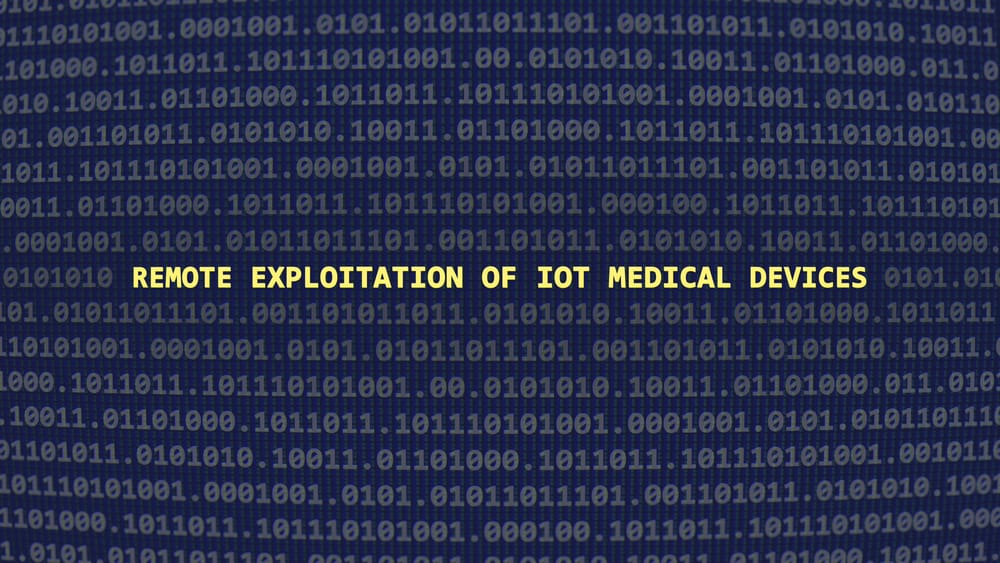HealthTech 2025-2026: Current Industry Challenges and Solutions
HealthTech is the next frontier. The global sector, encompassing medical devices, digital platforms, and next-generation patient care technologies, is entering a critical inflection point. For CEOs, Board members, and investors, the market is both an opportunity and a challenge. The pace of innovation has accelerated, yet the structural hurdles facing the industry remain profound. Leaders are being asked to balance breakthrough innovation with regulatory compliance, global competition, and strategic succession planning. At the same time, effective executive search and recruiting processes have become decisive factors in determining which firms can capture long-term value in this highly competitive space.
Market growth with structural pressures
HealthTech and medical device markets continue to expand, driven by rising demand for patient-centric solutions, connected care, and hospital-to-home ecosystems. Venture capital and private equity firms have poured billions into the sector, seeing clear long-term growth. However, executives recognize that scaling a HealthTech company is not just about growth capital—it is about leadership resilience.
Boards and Chairpersons increasingly report that succession gaps and CXO turnover have emerged as critical risks. Recruiting an experienced CEO or specialized executive with both clinical knowledge and digital acumen is no longer optional—it is essential. According to industry benchmarks, more than 40% of HealthTech firms in growth mode cite leadership pipeline weaknesses as a barrier to expansion. These challenges highlight the urgency of aligning recruiting strategies with corporate governance, succession planning, and shareholder expectations.
Regulatory complexity and compliance
Unlike other technology-driven markets, HealthTech and medical device companies operate in a stringent regulatory environment. The FDA in the United States, the EMA in Europe, and numerous national health authorities impose rigorous requirements on product safety, data privacy, and post-market surveillance. For executives, compliance is not merely a legal obligation; it is a determinant of enterprise value.
A single compliance failure can delay product launches, erode brand trust, and reduce valuation. Boards and CEOs must therefore recruit leadership talent capable of navigating both science and regulation. Chairpersons and investors increasingly rely on executive search firms to identify leaders who can manage complex stakeholder environments while still driving innovation pipelines forward. This dual competency—regulatory fluency and commercial vision—is one of the rarest skill sets in the industry.
Digital transformation and integration gaps
Digital health platforms, IoT-enabled medical devices, and AI-driven diagnostics have redefined the HealthTech landscape. Hospitals, insurers, and patients now expect seamless integration across hardware, software, and cloud ecosystems. Yet integration remains one of the sector’s weakest points. Many promising medical device companies lack the CXO leadership needed to bridge technology platforms with healthcare delivery systems.
For Boards, this issue creates both risk and opportunity. Recruiting executives with cross-industry experience—in semiconductors, Industry 4.0 technologies, or robotics—can provide the necessary expertise to scale integrated solutions. Investors have recognized that successful digital integration directly correlates with valuation multiples in mergers, acquisitions, and IPOs. The most competitive firms are already prioritizing succession and executive search strategies to secure this rare combination of technical and clinical expertise.
Talent scarcity and succession challenges
Despite record levels of funding, HealthTech companies consistently face talent shortages at the executive level. Recruiters note that the demand for CEOs, CTOs, and Chief Medical Officers with cross-functional expertise outstrips supply. Private equity-backed firms face particular pressure, as accelerated growth timelines require immediate leadership capability.
Succession planning within Boards has also lagged behind industry needs. In many cases, Chairpersons must address unplanned CEO departures, leaving investors exposed to execution risk. This has made succession one of the defining priorities for 2025. Executive search partners are increasingly embedded with Boards to anticipate leadership transitions, identify next-generation leaders, and minimize disruption. For HealthTech, leadership succession is no longer a contingency—it is a competitive advantage.
Supply chain and operational volatility
The COVID-19 pandemic revealed the fragility of global supply chains, and medical device companies remain vulnerable to disruptions in semiconductors, sensors, and specialized components. CEOs and CXOs are now tasked with building resilient supply networks, often requiring new expertise in risk management, logistics, and cross-border operations.
Recruiting executives with operational excellence has therefore become central to Board agendas. HealthTech companies cannot rely solely on innovation to secure market share; they must demonstrate operational resilience to investors and regulators alike. Effective succession planning ensures that leadership teams possess the required competencies in supply chain, digital operations, and market expansion.
Investor scrutiny and governance
As venture capital and private equity flows into HealthTech, investor scrutiny of governance practices has intensified. Boards are expected to provide transparency, align executive compensation with long-term outcomes, and oversee succession planning. Investors demand evidence that CEOs and Chairpersons are actively managing leadership continuity and mitigating risks tied to talent scarcity.
For recruiters, this shift represents an opportunity to influence strategic outcomes. Executive search firms that specialize in HealthTech and medical device industries are uniquely positioned to align leadership pipelines with governance frameworks. As governance becomes a differentiator in capital allocation decisions, firms with proactive succession strategies will gain access to more favorable funding terms.
Strategic outlook for executives and Boards
The HealthTech sector is entering a decisive decade. The companies that thrive will not be those with the most capital alone but those with leadership strategies embedded at the core of governance. CEOs, Boards, and Chairpersons must recognize that recruiting for tomorrow’s challenges requires foresight today. Executive search is no longer transactional; it is a strategic lever for sustainable growth, succession planning, and investor confidence.
As the market matures, one constant remains: leadership will define winners and laggards. Firms that anticipate succession risks, secure cross-functional CXO talent, and align governance with innovation will position themselves at the forefront of the HealthTech revolution.
For further insights into executive recruiting trends in HealthTech and beyond, visit NextGen’s Industry News.
Executives who wish to position their organizations for resilience and growth should consider whether their current leadership pipeline can withstand the challenges ahead. Addressing succession now ensures that Boards and CEOs can act decisively when opportunities or disruptions emerge.
Leadership solutions for a changing industry
While the challenges facing the HealthTech and medical device sectors are substantial, forward-thinking CEOs and Boards are already deploying strategies that address these gaps head-on. Executive search firms and recruiters play a pivotal role in this shift, helping Chairpersons and investors secure leadership teams capable of transforming operational hurdles into competitive strengths.
The most effective solutions blend governance, succession planning, and cross-sector expertise. For HealthTech companies, leadership resilience is no longer aspirational—it is mandatory. Firms that fail to recruit the right executives will see promising innovations stall under regulatory delays, fragmented digital systems, or supply chain vulnerabilities. Conversely, those that embrace disciplined executive search processes and succession planning will gain measurable advantages in market share and valuation.
Building digital ecosystems with proven leadership
One of the most pressing solutions lies in the digitalization of healthcare. CEOs who can lead integrations of IoT-enabled devices, AI-driven platforms, and patient-centric digital ecosystems are in highest demand. Recruiting leaders with experience across Industry 4.0 and robotics sectors often provides the technical perspective needed to scale these systems globally.
HealthTech companies investing in digital transformation are also focusing on customer experience. Biometrics, cloud connectivity, and predictive analytics are no longer differentiators but expectations in modern healthcare. Boards that prioritize succession and identify executives skilled in digital healthcare delivery will position their firms ahead of the curve. For a deeper perspective, NextGen highlights how advanced biometrics are enhancing customer experience in HealthTech.
Chairpersons who commit early to embedding digital expertise at the CXO level create organizations capable of adapting rapidly to patient and provider expectations. This ensures not only compliance but also trust—an asset increasingly valued by regulators, investors, and end-users alike.
Strengthening governance and succession planning
Solutions to HealthTech’s leadership gaps begin with proactive governance. Succession must become a standing agenda item for every Board meeting. CEOs cannot operate in isolation; Chairpersons and Directors are responsible for ensuring that leadership pipelines align with both innovation cycles and investor timelines.
Executive search partners can provide frameworks that identify emerging leaders internally while also mapping external talent pools. This dual approach mitigates risks associated with sudden CEO or CXO departures. Investors, particularly private equity firms, increasingly demand evidence that succession planning has been formalized and stress-tested. For HealthTech companies, demonstrating governance maturity directly impacts access to capital and valuation outcomes.
Operational resilience and supply chain strategy
Operational challenges, particularly around supply chains, demand leadership with a new skill set. Boards must recruit executives who understand not only production and logistics but also geopolitics, semiconductor dependencies, and cross-border compliance. Recruiting for these capabilities requires executive search strategies that cross traditional industry boundaries.
For example, CXOs with backgrounds in advanced manufacturing or IIoT can apply proven solutions to optimize medical device supply chains. This convergence of expertise is becoming one of the most valuable traits in executive recruiting. Boards that anticipate supply chain risks and align succession planning with operational expertise will protect revenue continuity in volatile environments.
Navigating market disruptions with experienced CEOs
No discussion of HealthTech solutions is complete without addressing market volatility. Disruptions—whether from pandemics, regulatory changes, or investor sentiment—require CEOs who can make decisive, well-communicated choices. Chairpersons and investors increasingly favor executives with prior experience navigating uncertainty.
Recruiters emphasize that candidates who have successfully led organizations through downturns, restructuring, or disruptive innovation cycles offer rare, transferable value. Boards that focus their executive search processes on these qualities will ensure resilience when disruptions inevitably arise. For example, the lessons from proven leaders highlighted in navigating market disruptions with top CEOs underscore how critical leadership agility is in sustaining enterprise value.
This underscores a broader truth: succession is not just about filling roles; it is about future-proofing the organization against disruptions that cannot always be predicted.
Aligning leadership with investor priorities
Private equity and venture capital firms are recalibrating their expectations for HealthTech portfolios. Investors no longer look only at the pipeline of medical devices or digital platforms; they demand evidence of leadership capacity, governance maturity, and succession readiness. Boards that integrate these expectations into their recruiting strategies build stronger investor confidence and secure more favorable financing.
This alignment also ensures that CEOs and CXOs are incentivized not merely to deliver quarterly results but to drive sustainable growth and innovation. Chairpersons who oversee this alignment strengthen the company’s long-term position, creating stability in the eyes of regulators, employees, and patients.
The recruiter’s strategic role
Recruiters and executive search consultants are no longer peripheral players; they are strategic advisors embedded within Boards and leadership committees. Their role is to identify leadership gaps, map global talent, and ensure seamless succession planning. For HealthTech firms, this strategic partnership often determines whether innovation can scale successfully across markets.
Recruiters with deep industry knowledge help Boards evaluate candidates beyond resumes. They assess adaptability, cross-sector fluency, and crisis leadership—traits increasingly vital in HealthTech. By doing so, they provide CEOs and Chairpersons with leadership teams capable of executing both immediate priorities and long-term strategies.
Closing perspective for executives
The HealthTech sector faces immense challenges, but solutions are clear: disciplined succession planning, targeted recruiting, operational resilience, and digital integration. CEOs, Boards, and Chairpersons who act now will secure sustainable growth and investor trust. Those who delay risk being overtaken by competitors who have already embedded leadership resilience into their governance frameworks.
For senior leaders, the question is not whether HealthTech will continue to expand—it will. The question is whether your organization’s leadership strategy is prepared to capture its full potential.
To stay ahead of industry shifts and leadership solutions, explore more insights from NextGen’s Industry News.
For CEOs, Boards, and Chairpersons navigating HealthTech’s shifting terrain, the time to reinforce succession and recruiting strategies is now. The companies that secure the right leadership today will define tomorrow’s healthcare ecosystem.
About NextGen Global Executive Search
NextGen Global Executive Search is a retained firm focused on elite executive placements for VC-backed, PE-owned, growth-stage companies and SMEs in complex sectors such as MedTech, IoT, Power Electronics, Robotics, Defense and Photonics. With deep industry relationships, succession planning expertise and a performance-first approach to recruiting, NextGen not only offers an industry-leading replacement guarantee, they also help CEOs and Boards future-proof their leadership teams for long-term success. They also specialize in confidentially representing executives in their next challenge.
www.NextGenExecSearch.com























